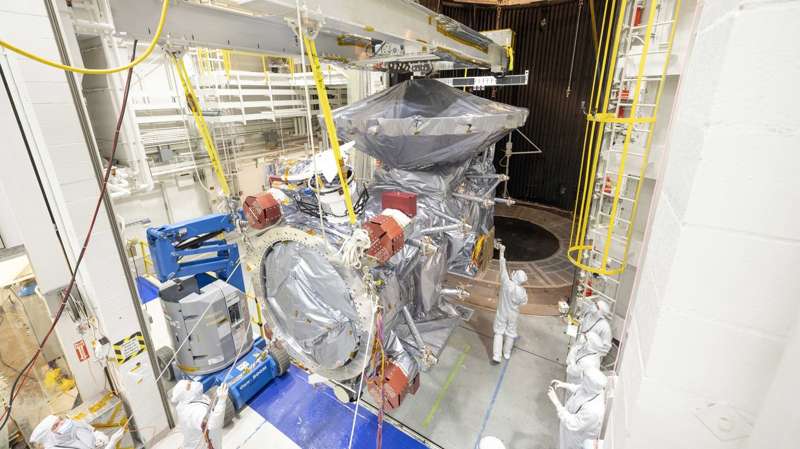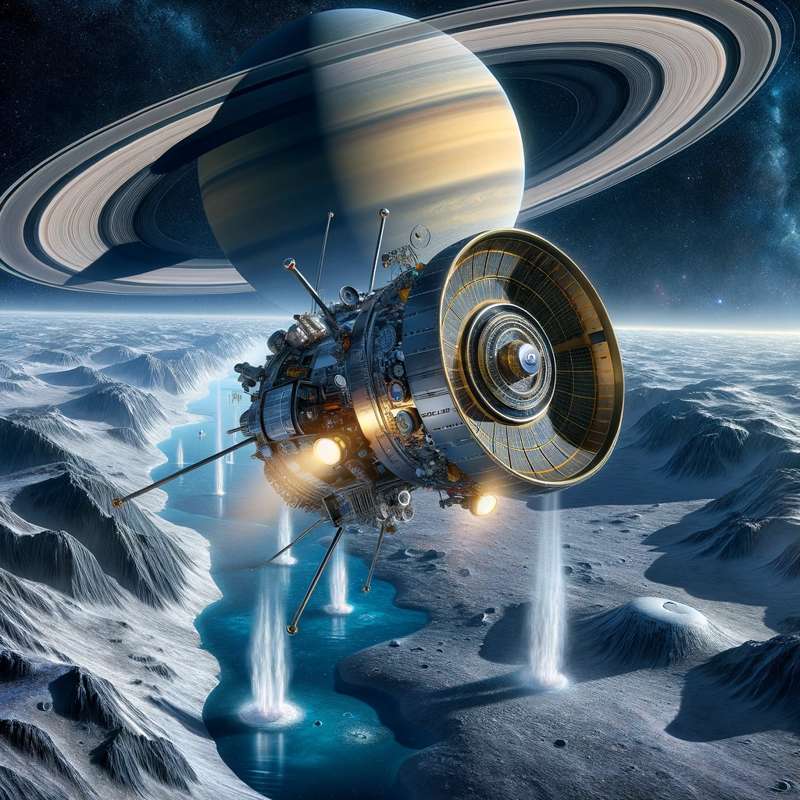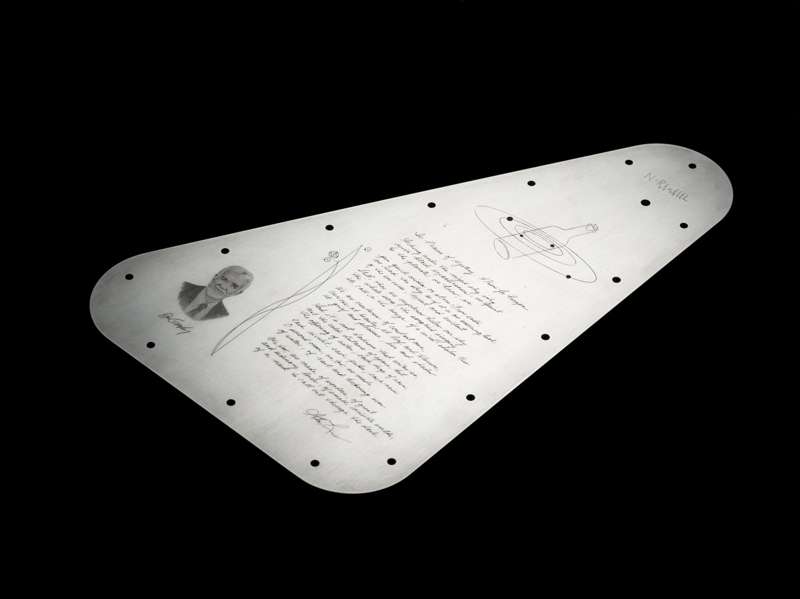Articles
Feature stories, news review, opinion & commentary on Alien Life

Exploring New Frontiers: Purple Could Be the Signature Color of Life on Exoplanets
Apr 17, 2024 • (2 Minute Read) • Alien
Scientists have shifted the search for extraterrestrial life to include purple bacteria, suggesting that these organisms could be prevalent on exoplanets, especially those orbiting M-type stars. Traditional green landscapes, associated with oxygenic photosynthesis, are now complemented by models showing purple bacteria dominating exoplanetary surfaces. This broadens potential biosignatures detectable with upcoming powerful telescopes. By expanding our understanding of life-supporting conditions to encompass anoxic environments and different light spectra, researchers enhance our ability to detect and understand diverse life forms across the universe, potentially identifying new, habitable worlds marked by their distinctive purple hue.

Researchers Propose New Method for Detecting Extraterrestrial Life Across Galaxies
Apr 15, 2024 • (2 Minute Read) • Astrobiology
In a novel study, scientists Harrison B. Smith and Lana Sinapayen from the Earth-Life Science Institute propose a new method for detecting extraterrestrial life that does not rely on Earth-centric biosignatures. Instead, their model uses statistical patterns from the process of panspermia and terraformation across planetary systems. By analyzing the correlations between planetary characteristics and spatial distributions, the researchers identify clusters of potentially life-altered planets without presupposing specific life forms or environmental conditions. This approach could revolutionize the search for life in the universe by focusing on life's effects rather than its direct manifestations.

Enhancing the Search for Intelligent Life: The Role of the Galactic Center
Mar 30, 2024 • (2 Minute Read) • Alien
Researchers have proposed a novel strategy to enhance the search for extraterrestrial intelligence by focusing on the Galactic Center, specifically utilizing the precise orbital movements of the star S2 around the Sagittarius A* black hole. This method capitalizes on S2's regular orbits as a reference clock, significantly narrowing the search area for potential alien signals. By leveraging these astronomical phenomena, the approach aims to streamline the search for intelligent life, offering a promising avenue to overcome the vastness and complexity of space that has long challenged traditional search efforts, potentially bringing us closer to discovering extraterrestrial civilizations.

NASA Prepares Autonomous Snake-Bot EELS To Probe The Hidden Oceans Of Saturn’s Moon Enceladus!
Mar 29, 2024 • (2 Minute Read) • Encounter
NASA's Jet Propulsion Laboratory is pioneering space exploration with EELS (Exobiology Extant Life Surveyor), an autonomous, snake-like robot designed to navigate terrains unreachable by conventional rovers. Inspired by the challenging landscapes of Saturn's moon Enceladus, EELS aims to traverse icy vents and subterranean oceans in search of extraterrestrial life. Weighing 220 pounds and stretching 13 feet, it combines lidar and stereo cameras for 3D environmental mapping, employing innovative propulsion and decision-making technologies to ensure safety and adaptability in diverse terrains. EELS represents a significant leap forward in the quest to explore the cosmos, embodying versatility and intelligence in robotic space exploration.

Astronomers Harness James Webb Space Telescope in Quest to Witness Planet Formation
Mar 28, 2024 • (2 Minute Read)
Astronomers leveraging the James Webb Space Telescope (JWST) have embarked on an ambitious quest to observe planet formation within protoplanetary disks, areas around young stars where planets are believed to form. Through a collaboration involving institutions such as the University of Michigan, University of Arizona, and University of Victoria, and combining JWST's capabilities with previous observations from Hubble and ALMA, researchers aim to uncover early signs of planet formation and their impact on their native disks. Initial studies have identified a potential planet forming within the disk SAO 206462, challenging existing models and highlighting the complexities of observing these nascent celestial bodies.

NASA’s Europa Clipper Mission: Gearing Up for a Journey to Jupiter’s Icy Moon
Mar 28, 2024 • (2 Minute Read)
NASA's Europa Clipper spacecraft is gearing up for a groundbreaking mission to explore Jupiter's icy moon, Europa, with a launch slated in less than six months. Having endured rigorous environmental testing at NASA’s Jet Propulsion Laboratory, the spacecraft is prepared to face the extreme conditions of space, including the intense radiation of Jupiter and varying temperatures. Scheduled to travel 1.6 billion miles to reach Europa by 2030, the mission aims to investigate the moon's subsurface ocean and its potential for supporting life, utilizing gravity assists from Mars and Earth. This ambitious mission marks a significant stride in the quest to understand the habitability of worlds beyond Earth.

European Space Agency Sets Sights on Saturn’s Moon to Uncover Alien Life
Mar 26, 2024 • (2 Minute Read) • Alien
The European Space Agency (ESA) has identified Saturn's moon Enceladus as the primary target for its first large-class mission under the Voyage 2050 program, focusing on the exploration of ocean worlds around the giant planets of our Solar System. Enceladus, with its icy surface, deep ocean, and plumes rich in organic compounds, presents an unparalleled opportunity to search for signs of life. This mission builds upon ESA's history of ambitious space exploration and aims to deploy advanced technologies in the 2040s to study the moon's habitability, potentially positioning Europe as a leader in planetary science and the search for extraterrestrial life.

Alien Life Within Our Reach: Breakthrough Discovery Reveals Hidden Microbial Worlds in Icy Moon Plumes
Mar 26, 2024 • (2 Minute Read) • Alien
Scientists have made a groundbreaking advancement in the search for extraterrestrial life, particularly on icy moons like Enceladus and Europa. Recent laboratory experiments have demonstrated the potential for future space missions, equipped with advanced mass spectrometers, to identify microbial materials within the ice grains these moons emit into space. This technique, simulating conditions future missions might face, highlights the ability to detect even fractional parts of a bacterial cell in individual grains. This innovation marks a significant leap in astrobiology, potentially making the discovery of alien life more achievable than previously imagined, by directly analyzing the chemical diversity ejected from subsurface oceans.

The Fermi Paradox: Humanity's Cosmic Conundrum
Mar 22, 2024 • (1 Minute Read) • Alien
The Fermi Paradox highlights the contradiction between the high probability of extraterrestrial civilizations' existence and the absence of evidence for such life. Named after physicist Enrico Fermi, who first posed the question "But where is everybody?" during a 1950 conversation, the paradox questions why, despite the billions of stars with Earth-like planets in the Milky Way, no signs of advanced alien life have been found. Various theories, including the Great Filter, zoo hypothesis, and the Drake equation, attempt to explain the silence, yet the mystery persists, deepening the intrigue about our place in the cosmos and the existence of other intelligent beings.

Proteotyping Unveils Potential New Microbial Life in Andean Lakes, Offering Clues in Search for Extraterrestrial Existence
Mar 17, 2024 • (2 Minute Read) • Alien
In a revolutionary study, scientists have utilized advanced proteotyping technology to analyze microbial isolates from the high-altitude Andean lakes, unveiling the potential for discovering new microbial life forms and offering insights into the search for extraterrestrial existence. These lakes, with conditions similar to early Mars, serve as ideal environments for studying life's survival under extreme conditions. Proteotyping, a technique that analyzes protein profiles, has proven to be more effective than traditional DNA-based methods, revealing new species and even suggesting new genera previously undetected. This breakthrough not only advances microbial taxonomy but also has significant implications for astrobiology, suggesting that life beyond Earth could exist under similar extreme conditions. The study also highlights the potential biotechnological applications of these findings, underlining the importance of expanding genomic databases to improve proteotyping accuracy, thereby enriching our understanding of microbial life in extreme environments and bringing us closer to answering whether we are alone in the universe.

UFO sightings as reported in February 2024
Mar 14, 2024 • (3 Minute Read) • Encounter
In the latest compendium covering the 30 days ending March 12, 2024, the National UFO Reporting Center (NUFORC) reported 298 new UFO sightings, with 28 of these being notably credible, including testimonies from airline pilots and detailed close-range encounters. The United States led with 91 reports, highlighting its status as a UFO hotspot, with additional sightings reported globally from countries such as South Africa, Canada, Romania, and others, showcasing the worldwide nature of UFO occurrences. The sightings varied in shapes, with 'Orb' being the most common, followed by a diverse range including Circle, Triangle, and Fireball, among others. Noteworthy encounters included a high-speed chase in Rockford, IL, a spectacular light display over Pittsburgh, PA, and other remarkable sightings that contribute to NUFORC's extensive archive of over 170,000 reports, emphasizing the ongoing effort to understand these mysterious phenomena.

NASA's Cosmic Postcard to Alien Life: Europa Clipper's Bold Message Across the Stars
Mar 12, 2024 • (2 Minute Read) • Alien
In an extraordinary gesture of cosmic outreach, NASA's Europa Clipper mission is set to launch towards Jupiter's moon Europa, bearing a message intended for extraterrestrial intelligence. This historic spacecraft will carry a triangular metal plate inscribed with a poem and over 2.6 million human names, symbolizing Earth's diverse cultures and our collective curiosity. As it journeys 1.6 billion miles into space, the Europa Clipper's mission transcends scientific exploration, embodying humanity's hope to discover extraterrestrial life and possibly initiate the first interstellar dialogue, marking a pivotal moment in our quest to understand our place in the cosmos.